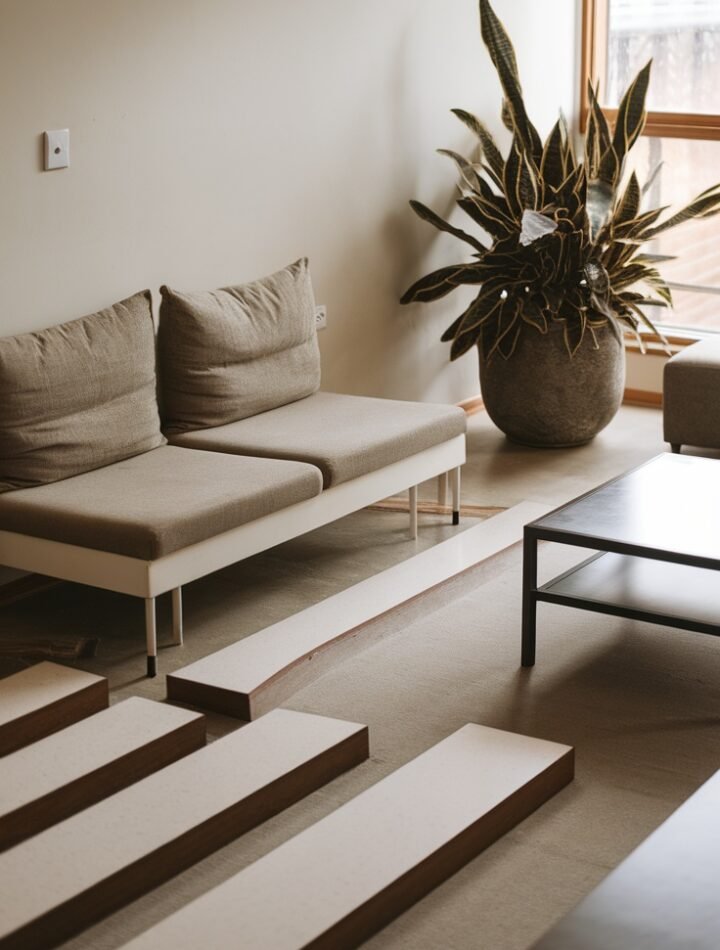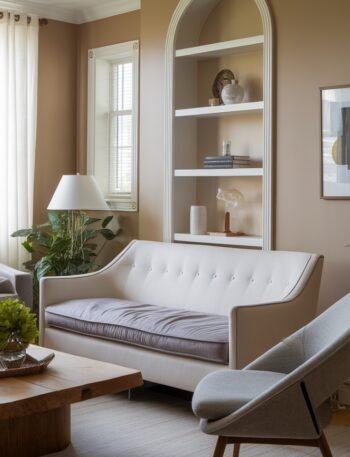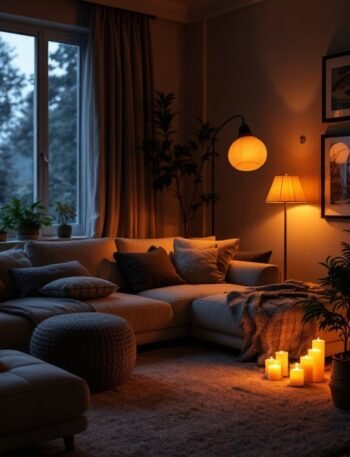Let’s be real—decorating your living room can be a bit tricky, and even the most experienced decorators make mistakes. From awkward furniture arrangements to mismatched color schemes, it’s easy to overlook some details. In this guide, we’ll dive into ten common living room decor slip-ups and offer simple fixes to help you create a cozy and stylish space that truly reflects your personality.
Choosing the Wrong Color Palette
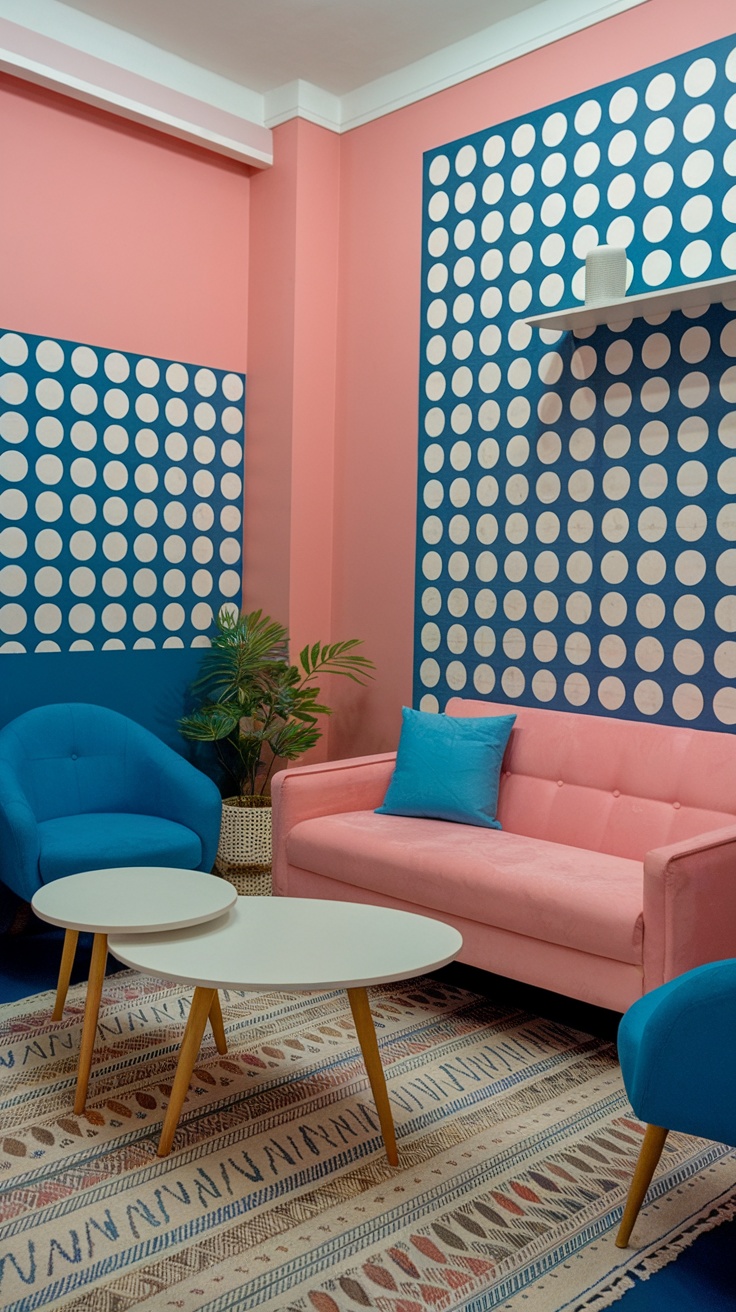
When decorating your living room, choosing the right color palette is crucial. The image here shows a vibrant mix of pink, blue, and white that can easily inspire you. However, if these colors clash or don’t reflect your personality, they can make the space feel chaotic instead of cozy.
Take a closer look at the image. The soft pink walls contrast nicely with the bold blue accents, creating a lively atmosphere. This is a great example of how color can set the mood. But if you find the colors too overwhelming, it might be time to rethink your choices.
A well-balanced color palette can make your living room feel inviting and harmonious. Consider using neutral colors as a base and adding pops of color through accessories like cushions, artwork, and rugs. This way, you can keep the space feeling fresh without going overboard.
Remember, your living room should reflect your style while also being a place of comfort. If you’re unsure, grab some paint samples or fabric swatches and see how they look together in your space. Don’t be afraid to experiment!
Lack of Focal Point
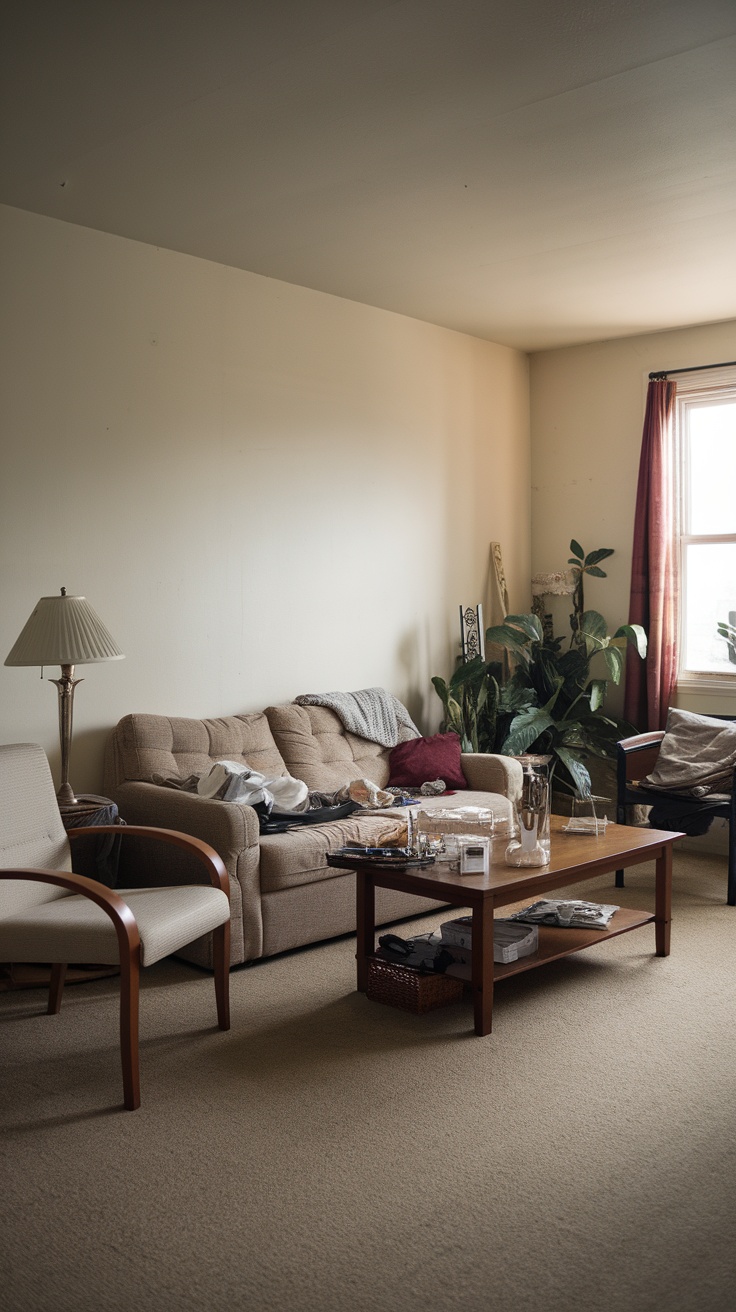
When you walk into a living room, your eyes should naturally gravitate to a main feature or element. In the image above, the room feels a bit scattered, lacking a clear focal point. The couch and coffee table are present, but nothing draws your attention in a meaningful way.
Without a focal point, a room can feel uninviting and disorganized. The plants and lamp in the corner don’t provide enough visual interest to anchor the space. Consider incorporating a statement piece, like a bold artwork or a striking piece of furniture, to create that center of attention.
Another option is to arrange furniture to face a specific area, such as a fireplace or a large window. This creates a sense of harmony and encourages conversation. By identifying and enhancing your focal point, you can transform the room into a more cohesive and welcoming space.
Neglecting Lighting Layers
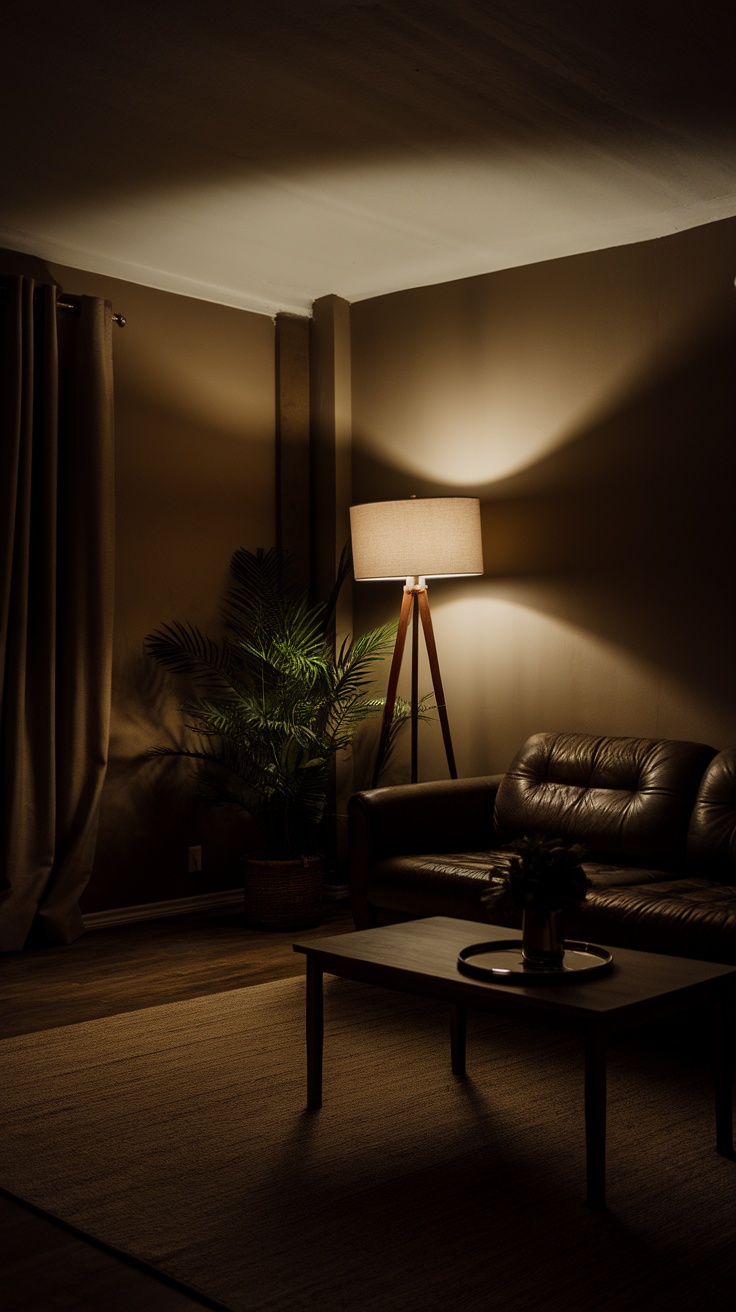
Lighting is often overlooked in living room decor, yet it plays a crucial role in setting the mood. The image here shows a cozy living space with a floor lamp casting a warm glow. This type of lighting can create a relaxing atmosphere, perfect for unwinding after a long day.
Many people stick to a single source of light, like an overhead fixture. However, combining different types of lighting—ambient, task, and accent—can really change the vibe. For instance, the lamp in the image not only provides light but also adds style to the room.
To fix lighting issues, start by layering your lights. Use table lamps and wall sconces in addition to your main light source. This way, you can adjust the brightness based on your activities, whether it’s reading a book or hosting friends. Don’t forget about placement—strategically positioning lights can highlight your favorite decor pieces, like the plant in the corner.
Remember, a well-lit room can make all the difference. It enhances the overall look and feel of the space, making it inviting and functional. So, next time you redecorate, give your lighting the attention it deserves!
Forgetting About Traffic Flow
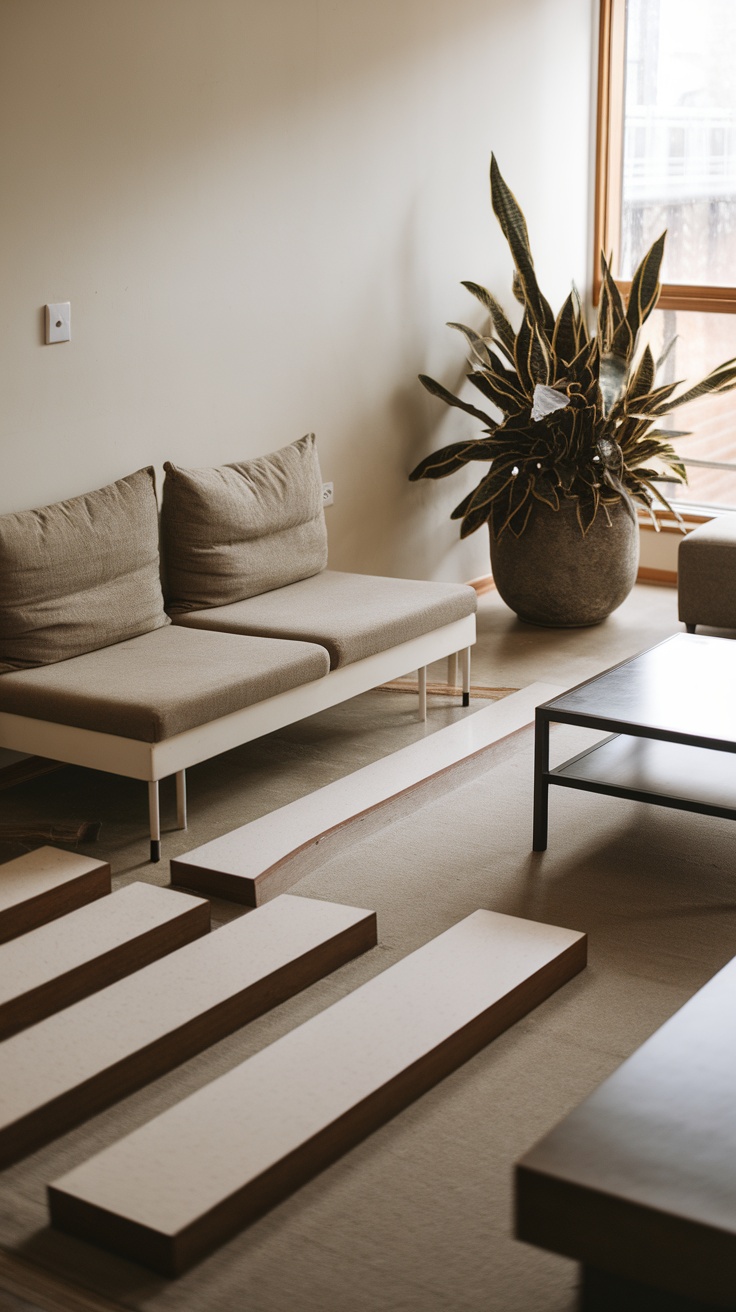
When setting up your living room, one common mistake is neglecting the flow of movement through the space. In the image, you can see a simple yet stylish layout. However, the arrangement of furniture and decor must allow for easy access and interaction. Notice how the seating is positioned, leaving ample space for people to walk around without obstacles. That open path makes a huge difference in how comfortable the space feels.
To enhance traffic flow, consider where people naturally move. Aim to keep pathways clear, especially between key areas like seating and doors. This will make your living room feel more inviting and functional. You might want to adjust the placement of furniture or even the size of your decor to achieve this seamless flow. For instance, shifting that coffee table slightly can open up the area considerably.
Incorporating a few thoughtful changes can transform your living room. Remember, a well-planned space not only looks good but also promotes easy movement and conversation. So, take a moment to analyze your layout and see if it encourages a smooth flow of traffic. Making these adjustments can lead to a much more enjoyable and accessible living room experience.
Overlooking Texture Variety
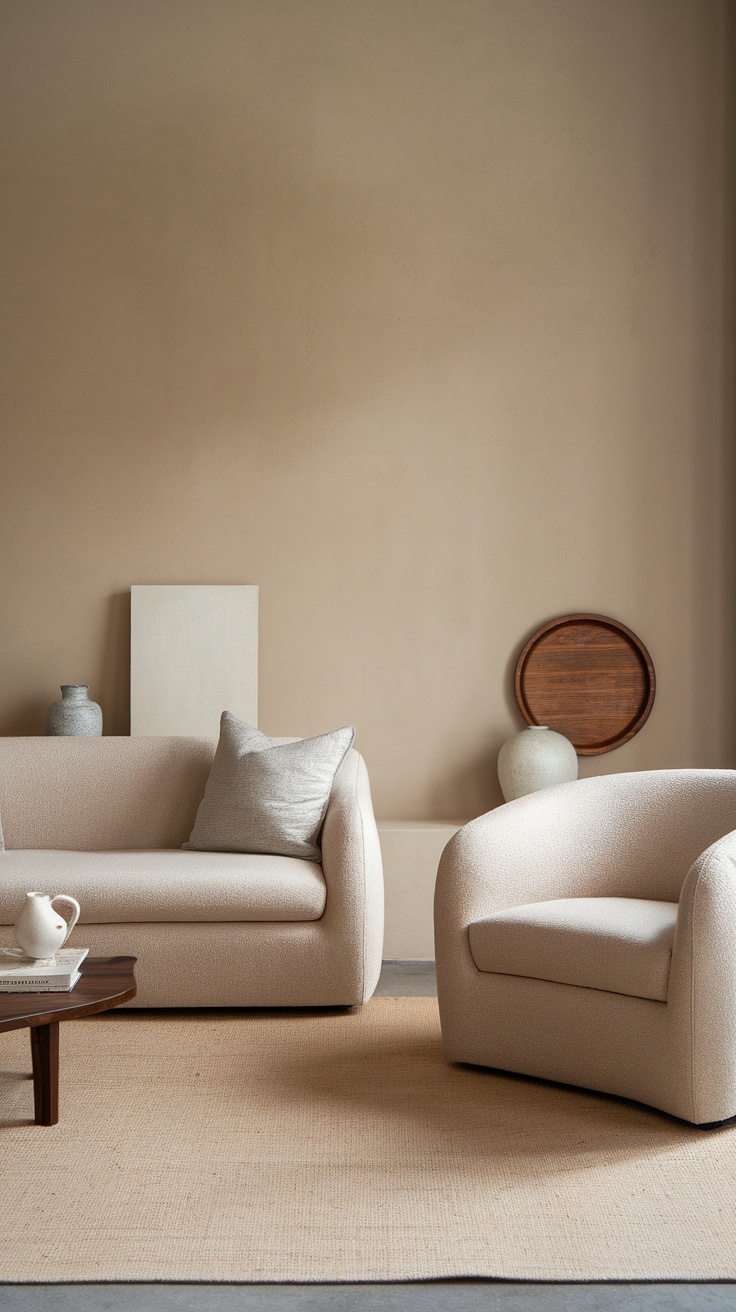
When decorating a living room, many people focus primarily on color and furniture style. However, one common mistake is overlooking texture variety. This image beautifully illustrates how different textures can work together to create a cozy and inviting space.
In the picture, we see soft fabric on the couch paired with a slightly rougher texture on the rug. The subtle contrast between the smooth ceramics and the warm wood of the table adds depth to the overall aesthetic. This blend of materials keeps the eye engaged and enhances the room’s warmth.
To avoid this mistake, consider incorporating various textures in your living room. Think about adding different materials like woven textiles, smooth ceramics, or even natural elements like wood and stone. Mixing these can create a layered look that feels inviting and complete.
So next time you’re setting up your living room, remember to play with texture! It’s a simple yet effective way to elevate your decor.
Cluttered Surfaces Without Purpose
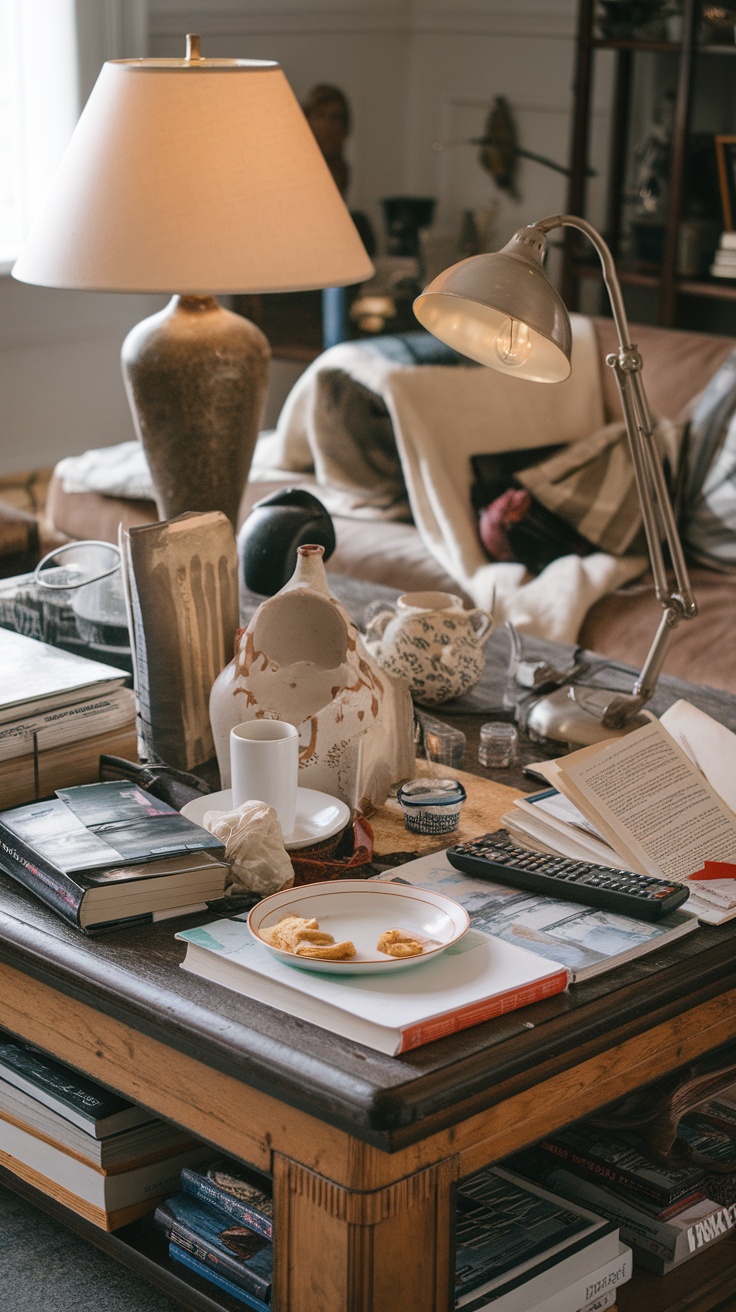
Take a look at the common living room scenario depicted in the image. You’ll notice a coffee table overflowing with items that seem to lack cohesion. There’s a mix of books, dishes, and decorative objects all piled together.
This clutter can make a space feel disorganized and chaotic, which isn’t the vibe most of us want when we come home. Surfaces should serve a purpose. A coffee table, for instance, is meant for drinks or snacks, not as a catch-all for everything we own.
To tackle this issue, start by clearing off the surfaces. Decide what items are essential and which can be stored away. Use baskets or stylish boxes to keep the necessary items but minimize visual clutter.
Incorporate decorative trays to group smaller objects together neatly. This simple trick not only looks good but also helps in organizing your space. Remember, a clear surface can transform your living room from a jumble to a welcoming area where you actually want to relax.
Ignoring Scale and Proportion
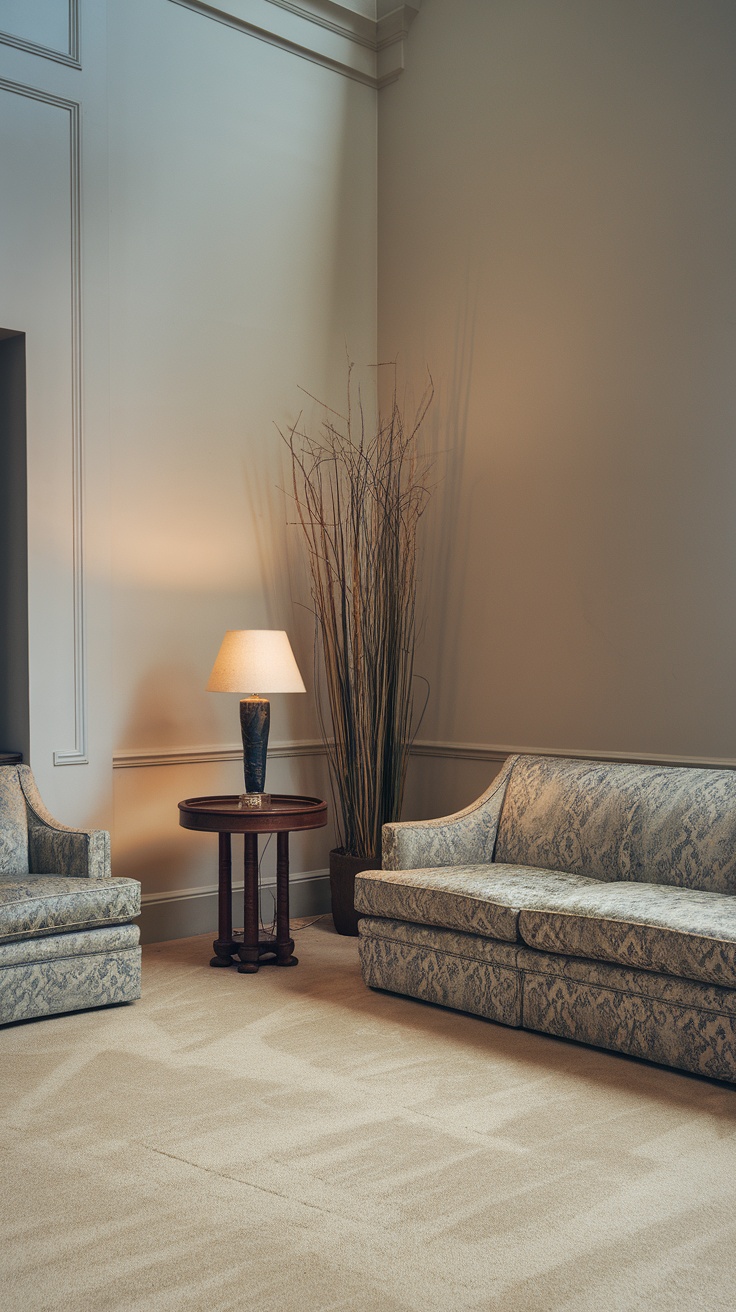
When decorating your living room, one common mistake is overlooking scale and proportion. The right balance makes a space feel comfortable and inviting. In the image, we see two chairs and a sofa that seem to fit well in the area. However, if the furniture were too large or too small for the room, it could create a sense of awkwardness.
Imagine a tiny chair next to a giant couch. It just wouldn’t look right, right? Each piece of furniture should complement the others and the room itself. If you have high ceilings, opt for taller pieces that draw the eye upward. Conversely, in a cozy space, lower furniture can create a more intimate atmosphere.
Another aspect to consider is the arrangement of furniture. In this image, the pieces are spaced nicely, allowing for easy movement. If they were crammed together, it would feel cramped and chaotic. Always measure your space before buying new items, and think about how they’ll fit together.
In summary, paying attention to scale and proportion is key. It ensures that your living room not only looks good but also feels good. So, take a step back and evaluate how your pieces work together. You’ll find that little adjustments can make a big difference!
Overly Themed Decor

When you walk into a room overflowing with a single theme, it can feel a bit much. Take the image above as an example. The decor leans heavily into a nautical or pirate theme with flags, ropes, and artwork all echoing the same vibe. While it might be fun, it can also feel cluttered and overwhelming.
Having an overly themed space can make it hard for guests to relax. Instead of feeling warm and inviting, the room can come off as a museum exhibit focused on one idea. It’s important to strike a balance between expressing your interests and creating a cozy atmosphere.
One way to fix overly themed decor is to mix and match elements. Try incorporating neutral colors and textures that complement your theme without overpowering it. This can help create a more inviting space that still showcases your personality.
Also, consider adding a few decor pieces that tell a different story. This will offer visual breaks and keep the room from feeling too one-dimensional. Little touches, like plants or varied artwork, can make a world of difference in how your space feels.
Ignoring Functionality for Aesthetics
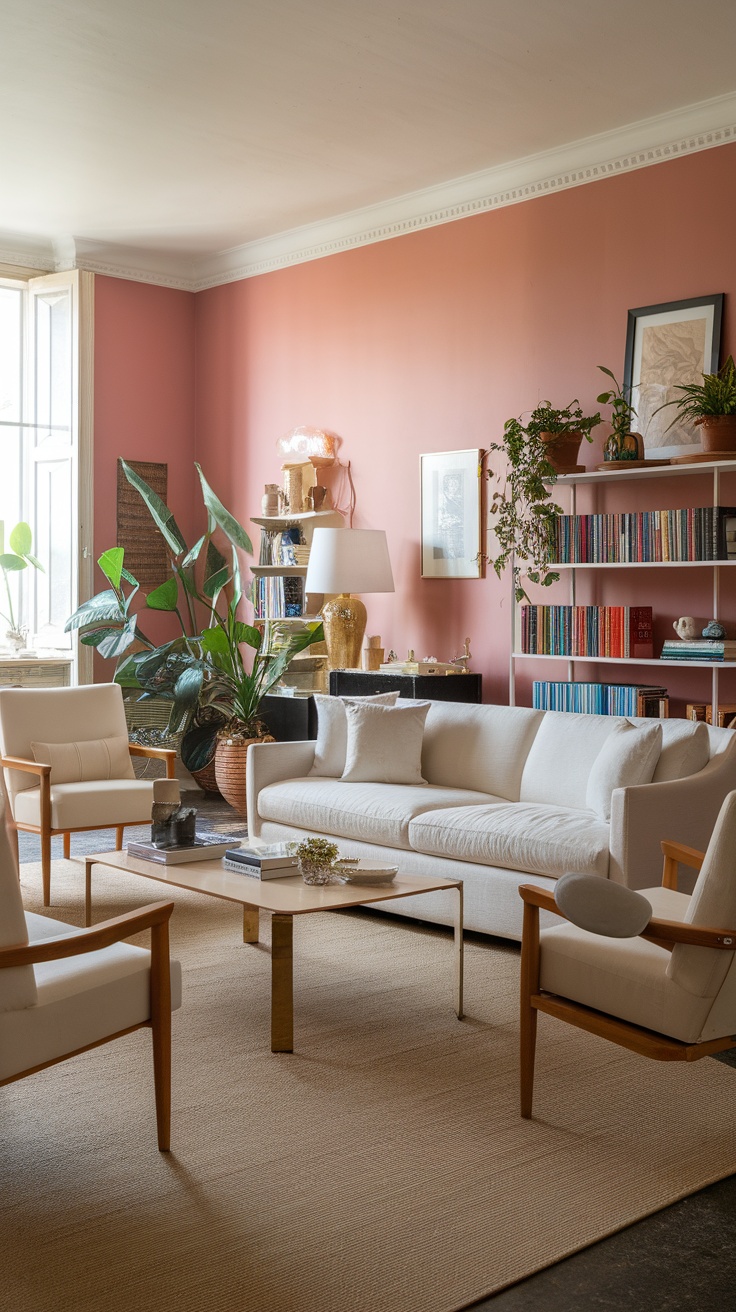
It’s easy to get carried away with how a living room looks. A stylish sofa, trendy chairs, and chic decor can make a space feel inviting. However, when functionality takes a backseat, you might end up with a setup that’s not very livable.
Take a look at the image of this living room. While the soft color palette and modern furniture are appealing, consider how well the layout works for daily life. The seating arrangement looks great but does it offer enough comfort for long conversations or family gatherings? A balance between style and practicality is crucial.
In this space, the coffee table is an excellent choice for aesthetics, but think about how it fits into your routine. Is it easy to access? Can it hold snacks, drinks, or books without feeling cluttered? These details matter.
Plants and decor items add character, but make sure they’re not just pretty. Do they serve a purpose? Maybe a plant doubles as a natural air purifier, or a sleek shelf offers both display and storage. The key is to create a room that feels good and functions well.
Misplaced Wall Art
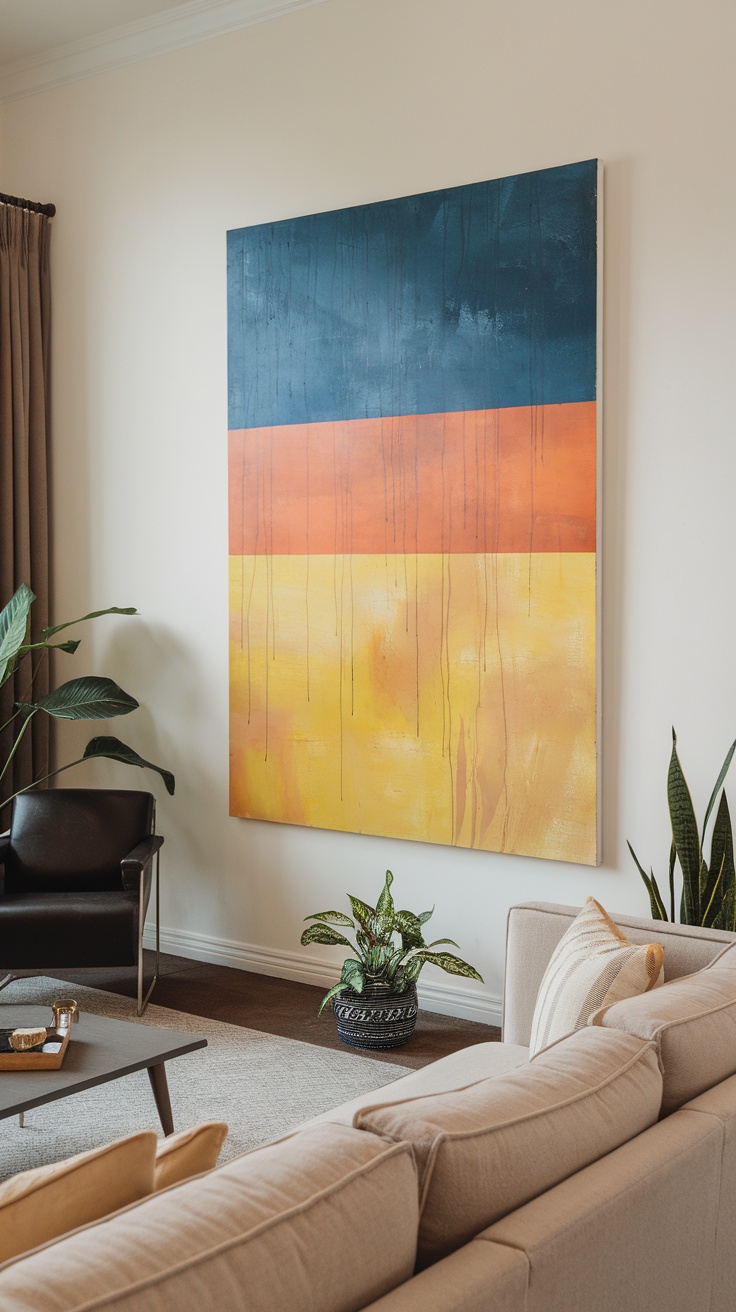
Wall art can be a focal point in your living room, but placing it incorrectly can make your space feel off-balance. In the image, we see a large, colorful painting that draws the eye. It’s vibrant and adds a splash of color, but if it’s too high or low, it can disrupt the flow of the room.
For instance, this artwork seems to be well-placed above a cozy sofa, complementing the overall decor. However, if it were hung too high, it could feel disconnected from the seating area, making it harder for guests to appreciate. A good rule of thumb is to hang art at eye level, which generally means the center of the piece should be around 57 to 60 inches from the floor.
Additionally, consider the surrounding elements. The plants and furniture in the image create a harmonious balance. If the art were smaller or in a crowded space, it might get lost in the mix. A larger piece can work well in a minimalist setup, as seen here, where it stands out without overwhelming the room.
To fix misplaced wall art, take a step back and evaluate your space. Use painter’s tape to outline where the artwork would sit, and adjust until it feels just right. By paying attention to placement, you can enhance the beauty of your living room.
